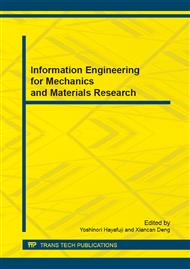p.141
p.146
p.152
p.159
p.165
p.172
p.176
p.181
p.185
Detection of Intima-Media Thickness in Common Carotid Artery on Ultrasound Image
Abstract:
The intima-media thickness (IMT) measurement is an important subject in the cardiovascular disease diagnosis. However, the manual way to measure IMT is not objective and imprecise due to the skill of the operators. In this paper, a new method of automatic IMT measurement is proposed. This algorithm solves the active contour model problem based on the modified dynamic programming to search the most minimize cost path which is the contour of the intima-media. Experimental results demonstrate that this method is not only robust for the impact of speckle noise, but also attain better extraction results than the traditional way with much smaller time-consuming. The clear intima-media could be automatically obtained with a simple and not very select ROI.
Info:
Periodical:
Pages:
165-171
Citation:
Online since:
September 2013
Authors:
Keywords:
Price:
Сopyright:
© 2013 Trans Tech Publications Ltd. All Rights Reserved
Share:
Citation:


